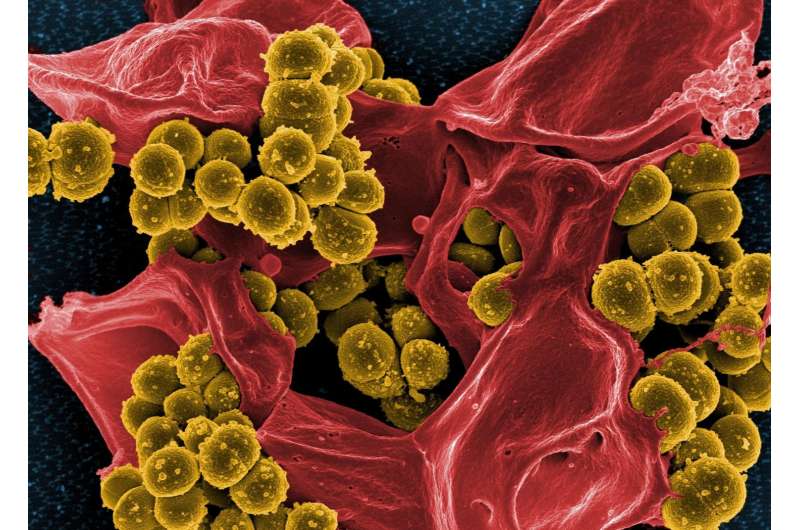Investigators use light to kill microbial 'vampires'

On July 24 Vanderbilt scientist Eric Skaar, Ph.D., MPH, summarized his group's latest paper in a tweet: "If S. aureus is going to drink our blood like a vampire, let's kill it with sunlight."
"That thing has been retweeted so many times," said Skaar, the Ernest W. Goodpasture Professor of Pathology in the Vanderbilt University School of Medicine. "It's one of the most popular tweets I've ever put out about our research."
No wonder. Staphylococcus aureus (staph) is the leading cause of hospital-acquired infections. Antibiotic-resistant strains of the bug, like MRSA, can kill.
Staph needs iron to grow. "It breaks open the blood cells and grabs the hemoglobin and pulls the iron out," Skaar said. Other Gram-positive pathogens probably do the same thing. "But the S. aureus systems are by far the most well studied," he said.
Now Skaar and his colleagues have found a new way to destroy these microbial vampires. Just as daylight strips Dracula of his power, they have shown that an enzyme-activating small molecule they developed, when combined with "photodynamic therapy," can kill bacteria in mouse models of skin and soft tissue infections.
The molecule, called '882 for short, activates a bacterial enzyme called CgoX, which in turn induces accumulation of a photoreactive molecule called CPIII. When struck by light of a certain wavelength, CPIII produces reactive oxygen species that kill the bacterium.
"Small-molecule activation of CgoX represents a promising strategy for the development of light-based antimicrobial therapies," the researchers concluded this week in the Proceedings of the National Academy of Sciences.
Photodynamic therapy—light combined with a photosensitizing chemical—is used to treat certain cancers and skin conditions including acne. But "it's never really taken off as a treatment for infection because you kill the human cells too," Skaar said.
"Now we have a molecule that only targets the bacterial enzyme in the pathway so you can selectively make bacteria photosensitive," he said.
Another unique aspect of the study is the use of '882, one of only about a dozen synthetic small molecules known to activate, rather than inhibit, an enzyme.
The molecule was identified through Vanderbilt University Medical Center's high-throughput screening facility and developed in collaboration with the lab of Gary Sulikowski, Ph.D., Stevenson Professor of Chemistry in the College of Arts and Science.
More information: Antibacterial photosensitization through activation of coproporphyrinogen oxidase , Matthew C. Surdel, DOI: 10.1073/pnas.1700469114 www.pnas.org/content/early/201 … 7/19/1700469114.full



















